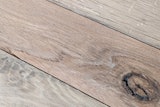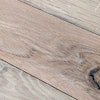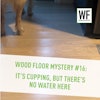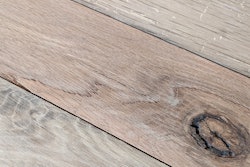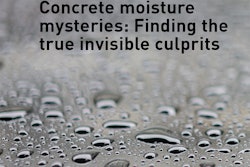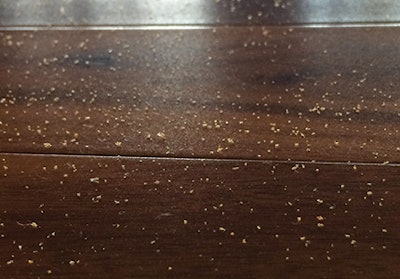

The Problem
A homeowner in Colorado called after the click floating floor installed in her home as part of a remodeling project began showing signs of what appeared to be a beetle infestation.
What Happened
Approximately 900 square feet of the prefinished floating acacia floor was installed in the basement and on the stairs of a home in Colorado. The click-together floor was installed by the remodeling contractor over the basement's concrete slab, which had hydronic radiant heat.
Less than a year later, the homeowner began seeing a powdery substance on the flooring. An initial diagnosis from an exterminator was that beetles from the engineered flooring had infested the home. The homeowner said it appeared to be spreading to existing oak flooring upstairs.
The Inspection
When I arrived, a powdery substance was clearly visible from a standing position on the surface throughout the dark floor. It appeared to be more prevalent in high-traffic areas. Moisture readings at the home were within the range of "normal:" The temperature was 67 degrees Fahrenheit, the RH was 30 percent and the flooring MC averaged 7–9 percent. The homeowner said the radiant heat was never turned higher than 63 degrees, although I found it at 80.
At this point, not much made sense. Powderpost beetles make small "volcanoes" of frass—wood dust—with an obvious hole where they enter the wood. There were no frass volcanoes, nor were there holes in the wood. I collected the powdery substance from the floor as well as some flooring samples to investigate this problem away from the job site.
I contacted the flooring manufacturer and discovered the flooring was not approved for installation over radiant heat. I then examined the substance I had collected from the flooring more closely. Under magnification, it appeared to contain a wax-like substance, as well as wood fibers. When heated, the wax-like substance melted, and the wood fibers burned. Looking at the underside of the flooring tongue, a waxy substance was evident, likely to help the tongue slide into the adjacent piece. I decided to heat the flooring. I could then collect the waxy substance from the tongue, and it behaved exactly the same as the powder from the job site when exposed to more heat. I deduced that the powder at the home was this waxy substance, along with wood dust left from installation, created by the radiant heat.
How to Fix the Floor
The floor had to be replaced with a product suitable for a below-grade, radiant heat installation.
In the Future
The installer on this job said that he did not read the instructions for this specific flooring, although he had installed many floors from the same company before. Always be sure you are using wood flooring that is approved for the type of job site where it will be installed.











